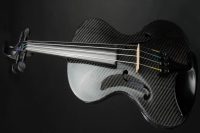If you’re staying in a city, you probably hear sirens almost every day. Police cars, ambulances, fire trucks, they all can come yelling. Their high-pitched sounds are extremely loud to help inform others to evacuate the road in front of them. But have you ever imagined how this loud noise is created? You can make your own disk siren in this amazing STEM activity and find out for yourself. This affordable and interesting Disk Siren perfectly demonstrates the physics of sound, which is basically just the flow of air that can enhance the knowledge of your kids. Do you know that sirens can help demonstrate how sound frequency works? So, roll up your sleeves, and make some noise using a self-made perforated disk siren!
Supplies Required For Disk Siren Activity
- Protractor
- Heavy construction paper
- Double-sided foam tape
- Scissors
- Pencil
- (Math) compass
- Round-hole puncher
- Cordless electric screwdriver (You should only use it with adult assistance.)
- Small hexagonal bit
- Straw
- Paper clip or needle
- Paper towel
- Adult helper
Preparation Required For Disk Siren Activity
- Firstly, draw a circle with the compass that has an eight-centimeter radius on the cardboard. Within the same circle draw two smaller circles with seven- and six-centimeter radii.
- Now, cut out the largest circle.
- Apply the protractor to draw lines through the center of the circle in equal 15-degree intervals.
- Use the hole puncher, and on the seven-centimeter circle punch a hole at every intersection of the lines and the circle.
- Now, on the innermost six-centimeter circle punch holes at every second intersection of the lines and the circle.
- You should now have a disk with two concentric rings of holes in which the outermost ring has double the number of holes compared with the innermost ring.
- Now, cut a tiny piece of double-sided foam tape and stick it on the center of one side of the cardboard disk.
- With a paper clip or needle create a small hole through the center of the circle and foam tape.
- Now, put a little hexagonal bit in your cordless screwdriver.
- Then use the perforated cardboard disk and push the hexagonal bit through the small center hole of the circle so that the foam tape faces toward the electric screwdriver. Now, use the foam tape to adhere the cardboard disk to the cordless screwdriver so that it sits tightly on the screwdriver.
- Lastly,place the cordless screwdriver to its most distinguished setting.
Steps Involved In The Disk Siren Activity
- Take the straw and keep your hand in front of it while blowing into it.
- Now help your kids to hold the cordless electric screwdriver with the cardboard disk connected. Do not turn it on when anyone else is nearby. Now help your kids to run the cordless screwdriver in the highest setting.
- Next, now power the cordless screwdriver again and keep the disk spinning on the highest setting. Just ensure to keep the rotation speed of the disk the same. While the disk is rotating take the straw and put it about one to two centimeters in front of, or perpendicular to, the outer ring of holes and blow through it. Make sure you do not let the straw touch the disk.
- While the disk is still rotating at the same speed move your straw in line with the inner circle of holes and blow air through the straw against the disk.
- End the cordless screwdriver, and thus the disk’s rotation. Now gradually power it again, but this time pay attention to the disk speed.
- Once you and your kids have discovered how to produce different disk rotation speeds, take the straw again and blow against the outer ring of holes on the disk. While blowing, change the speed of the cordless screwdriver so that the disk spins at varying speeds.
- Lastly, play around with blowing at the two rings of holes at different rotation speeds.
As the disk rotates, the airflow will be alternately obstructed and permitted to move. The ensuing variation in air pressure creates a range of regular pressure waves that we recognize as sound. The number of holes in the disk decides its frequency.The disk’s rotation speed also influences the sound’s tone. You can determine the tone’s specific frequency by multiplying the number of rotations per second by the number of holes in the disk. Every hole pattern you create on the disk will result in a specific sound, sometimes a smooth musical tone, sometimes a rough noise. So give it a try!






